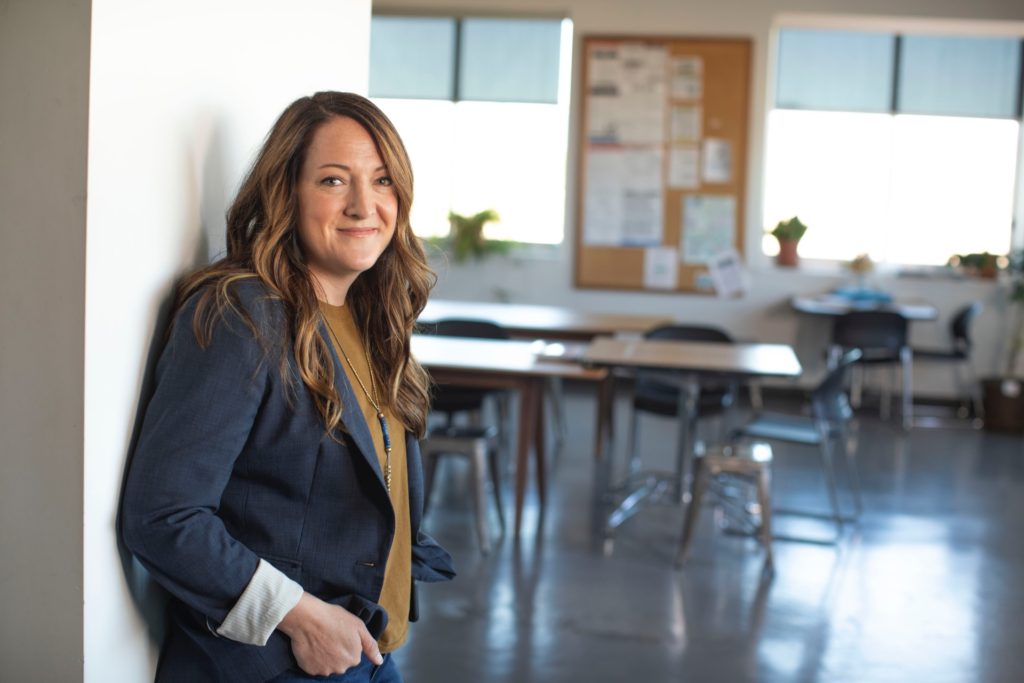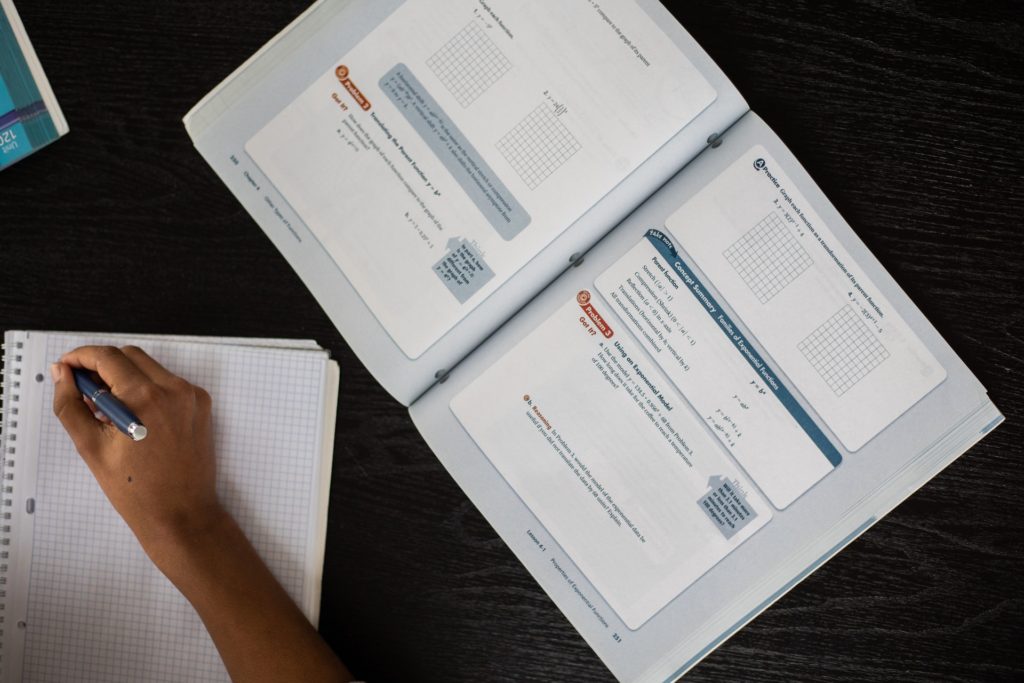Table of Contents
Some people have an idea that an expert teacher should be able to teach in an empty room with no supplies or plans. They should understand their subject so well that they can simply start a lecture and engage students with thoughtful questions. Is there any truth to this expectation? Is all the planning and organizing of activities and timing the sign of a novice teacher who hasn’t reached mastery yet? Are lesson plans actually important?
Ignoring how this structure of a simple lecture on a teacher’s passion doesn’t follow the best practices of student centered and brain based education, research shows that at least some amount of lesson planning is vital in order to manage instructional time effectively. In addition to that, lesson planning helps to generate mindful benchmarks and collect data on student progress to make data driven modifications throughout the year. Unfortunately, the term “lesson planning” is quite vague and some interpretations of lesson planning are far more effective and efficient than others.
Ineffective Lesson Planning Practices
While lesson planning is very important to ensure lessons are successful, many schools tend to overemphasize the lesson plan and actually utilize it as a way to police the content teachers choose to include. Some schools require teachers to submit lesson plans for approval or even post them for parents to review before lessons begin. This is not in the best interest of the students as lesson plans that are designed too early can not utilize recent data on student performance to make mindful modifications and ensure students are at an appropriate level of mastery before moving on to new concepts.
Lesson plans that are set up too early and don’t take into account students’ current achievement levels are destined to fail due to their rigidity and lack of data based decision making. Research out of Arkansas Tech University found that the ability to modify lesson plans accounted for 60% of the variance in successful lesson plans. (Womack et al.)
If lesson plans must be decided days or even months before they are being used, this completely precludes any ability to use current student performance to make mindful changes to lesson plans or utilize newly released materials. This is especially damaging for Social Studies lessons which under this model could never study or even discuss current events in class.
A recent bill proposed in Iowa takes this to an entirely new level by suggesting that teachers should be required to post an entire year’s worth of lesson plans before a course even begins. (Whiteleather) This bill is similar in scope to at least 10 other bills in other states which would require teachers to submit every single text, activity, and assessment at the beginning of the year for parental and administrative approval. Not only do these bills show a shocking lack of trust in teacher’s expertise, but also completely prevent many of the best teaching practices that make lesson plans actually effective.
If teachers have to submit every single thing that they are going to use throughout the year and can not modify these plans, then how can they make mindful decisions on what to include based on their knowledge of their students who they haven’t even met yet. This isn’t just limiting teachers’ ability to make data driven decisions, but eliminates any ability for teachers to differentiate their lessons for students with learning difficulties such as ASD and ADHD. Lessons that are planned far in advance are too rigid and will rely on everything going perfectly as planned, which any expert teacher will know is a fool’s hope.
Similarly, requiring teachers to write up multi-page incredibly detailed minute-by-minute outlines of each lesson will drastically reduce their flexibility to spend more time on an activity that is going well or push an activity students aren’t ready for yet to the next day. The ability to be flexible and make decisions on when students are ready to move on is vital for a teacher and something that no one can plan beforehand.
Administrators trying to dictate exactly where students should be at various stages of the course are ignoring student variability and different pacing preferences of individual teachers. Teachers need to be trusted to make professional judgment calls in reference to their students’ current achievement levels which only they have the data and experience to understand.
As long as every teacher reaches the same required standards at the end of the year, how they get there and how much time they spend on units and activities needs to be an on the spot decision made by the professional in charge of guiding that class. That doesn’t mean that nothing should be planned for a lesson, however nor does it mean that administrators shouldn’t have any access to ensure teachers are making responsible decisions when planning lessons.

How to Make Efficient and Effective Lesson Plans
Effective and efficient lesson plans make decisions on what to include based on background knowledge students have, current achievement levels, as well as what levels they will need to be reaching in order to be successful in next year’s class. According to best practices out of the University of Michigan’s Center for Research on Learning and Teaching lesson plans need to be based on answering three key questions that teachers need to ask themselves before each lesson. (Milkova)
1. “What do I want students to learn?”
This first question, though it seems simple at first, requires more thought and mindful decision making than meets the eye. What a teacher wants a student to learn should not be based simply on their personal preferences, but based on the answers to several sub-questions.
What do they already know from last year?
In order to make a good decision on what to teach, teachers need to know what students’ current experience is with the material and how much understanding they can show on an assessment. In order to determine this, initial lessons with a new class or on a new unit should begin with a diagnostic assessment.
Diagnostic assessments are simple, short, and ungraded classwork or homework assignments meant to give teachers a baseline for what students have already covered so as not to repeat already mastered concepts and see where students’ current areas of weakness lie. After the teacher goes over the results of their diagnostic assessment they can make more mindful choices about what to include to help shore up student weaknesses and challenge students in areas they already have a strong basic grasp.
Diagnostic assessments can be designed and prepared before a class begins and work as an important baseline for any new class coming into the course. Regardless of the student profiles, the diagnostic doesn’t need to change unless the course shifts to targeting new learning objectives.
Because of this, an important part of lesson plans that should be prepared early is the diagnostic assessments that will be given. This not only works to have the first few days’ lesson plans ready to go, but also ensures that learning objectives are being mindfully considered and baseline data is being collected to improve the class throughout the year.
What will next year expect?
Though this question seems like it should be considered later on in the year, this question is one of the few that can actually be answered before even meeting students. While students do have some variability in what classes they will be taking next year the older they get and the higher they take their education, generally most students will be on a similar track in school. Elementary especially tends to have quite clear standards of what students should know at the beginning of each year and even up through high school the vast majority of students will be moving from core class to core class.
Highly able learners may be taking advanced placement courses which will have different higher expectations of what students are capable of, but teachers should focus on ensuring all students can handle the basics before focusing on pushing students to achieve above the standard.
Even highly able students may have gaps in their learning due to overconfidence or poor approaches to learning, so teachers should make sure they have a solid foundation to move onto their advanced placement or higher level courses. Lessons should also implement Universal Design so that any lesson includes ways for students to push themselves further independently and with guidance if they are truly ready.
In order to know what students will be expected to know next year, teachers should have a meeting with the teacher who teaches the grade above them to discuss the expectations they have for students entering their course and collaborate on reasonable expectations. This is a good meeting to have each year to create effective diagnostic assessments as well as ensure classes remain aligned.
The teachers should collect notes on expectations for their students next year to compare against the data they collect from the diagnostic tests. They can then most clearly see which areas will require the most time to get up to standard and which areas won’t require as much instructional time.

2. “What teaching and learning activities will I use?”
Once the year begins and data has been assessed to decide which areas students need to improve on throughout the year, teachers can begin selecting texts and projects to include in order to build those skills in their students. While it might initially make sense to try and group activities that target skills together in different units throughout the year, it actually makes more sense to spread out and target each learning objective many times throughout the year.
Similar to how flash card apps don’t show the same card over and over until it has been memorized, but rather continually brings it up in regular intervals, teachers should regularly target each of their intended learning objectives to give students consistent practice rather than cramming one objective into the first unit and then never covering it again. Instead, teachers should group units into various contexts that they can target each of the learning objectives.
For example, an English teacher might want to target their students’ ability to write structured essay responses, but rather than having an “essay unit”, the teacher should have students write essays throughout the year in units which cover different contexts that students can write structured responses on such as advertising, political rhetoric, and novels.
Similarly, if a science teacher wants to improve students’ science vocabulary and help students to comprehend experimental design, they should have various units in different contexts like physics, chemistry, and psychology where students can design and conduct experiments and get more familiar with a broader base of vocabulary over time.
Structuring projects and activities like this isn’t just best practice, but also keeps students from getting bored. Spacing out information helps the brain to retain the information as not just important right now in working memory, but something that needs to be stored in long term memory and recalled later. Well established research from the British Journal of Psychology backs up the idea saying that “The spaced-practice effect refers to the strong and pervasive positive influence on long-term explicit memory which results from interposing at least one other item between the repetitions of any to-be-remembered item in a list-learning paradigm.” (Perruchet)
In other words, if a teacher really wants a student to remember something, they should cover it, cover something else, and then come back to the first thing they covered again. How much time and how much content should be placed in between instances of covering something is highly variable based on what is being covered, how many times it has been covered before, and the individual brains of each student.
Generally it is best to have more frequent check ins on a learning objective early on and then cover it less and less frequently as students consolidate their learning and remember more and more. While it is still good to come back and review old concepts to ensure they aren’t getting rusty, as something is more firmly rooted in the brain’s memory, the more time can elapse before those memories fade.
3. “How will I check for understanding?”
The last question teachers need to consider is how they will ensure the activities they have chosen are helping students to reach their learning objectives in time. Assessments are important learning tools not only to help students check their understanding, but also for teachers to collect data to see how students are improving on the chosen course learning objectives assessed in the diagnostic tests from the beginning of the year. It is important to make data driven decisions throughout the year and not just based on the first diagnostic assessments.
For the teacher, all tests are diagnostic tests and can be used in the exact same way. Each time a teacher includes an assessment they should check the students’ progress as a whole, but also keep an eye out for students falling between the cracks. While it is easy to identify some students who are struggling quite easily as they complain about how difficult the course is and are unable to answer questions in class, other students struggle in silence.
Collecting objective test data can help the teacher see students who are failing to keep up or who suddenly drop. Then the teacher can make decisions on whether to simply include more practice for that student or if a more professional intervention might be warranted such as psychological testing or assessment by the learning support team.
Tests and other assessments should always be introduced early and accompanied by a rubric of what will be assessed and what learning objectives it will target. This isn’t just so that administrators can oversee testing or even just so teachers can be mindful of making effective assessments, but also because it is important for students themselves.
Students need to be aware of expectations so that they can study appropriately and understand why they are studying what they are studying. Doing this will help students see which learning objectives they are personally weak in and improve more mindfully than just a simple letter grade or numerical score of overall performance. While grades need to be input in whatever format the school requires, teachers should always base those grades on individual and explicit learning objectives and student performance in each of those areas.
What is Lesson Study and Why is it Better than Lesson Planning?

One approach to lesson planning that has shown promise in not only improving the quality of lessons but also the confidence of new teachers is called lesson study. Rather than lesson planning alone, lesson study is a style of collaborative lesson planning which allows teachers who are teaching the same course to plan together, discuss recent class issues, and implement mindful interventions.
Because of the many decisions teachers have to make throughout the year and the myriad of issues that can come from each individual student, lesson planning can become overwhelming to handle alone. Research out of the University of Mississippi found in a small study that lesson study led to not only more effective lessons when compared with the controls, but also “positive comments” from the teachers involved. (Mitchell)
Working together in a social environment is healthier and often more fun for teachers and can be useful in keeping morale high. While sometimes it may make the most sense for each teacher to simply work in silence together, even being in the same space invites the opportunity for teachers to ask questions and share great resources much more quickly than an email.
Reducing the barriers to collaboration will especially be helpful for new teachers as they often don’t have access to the large trove of activities and learning resources that more veteran teachers have. This ability to double check their choices with more experienced teachers and get useful filler activities can be so helpful for new teachers who may feel overwhelmed by all of the decisions they have to make in addition to getting comfortable actually teaching in the classroom.
Lesson study is also useful for more expert teachers to discuss mindful course changes, new research trends, and get new ideas from other teachers. While their tried and true methods may often be the most effective, it is important that expert teachers don’t get stuck in their ways and remain open to new trends in research and new approaches to teaching. Expert teachers also obviously need to be involved in order to be able to help newer teachers by sharing resources, answering questions, and reassuring younger teachers that, no, it isn’t just them experiencing a classroom difficulty.
Lesson study also provides an easy place for administrators to get more involved and gain understanding of what issues teachers are facing, how they are progressing throughout the year, and see what supports they might be able to put in place to support their teachers reach their learning goals. While administrators should refrain from critiquing content choices unless they have background in those areas, they can still be helpful in offering suggestions on classroom practices, work to mediate disagreements in approach between teachers, and create additional opportunities for teachers by offering budget for supplies or extra spaces in the school for projects that require more than just a single classroom.
Lesson study should be put in place of traditional department meetings, and not added on top of it. Teachers already don’t have enough planning time and lesson study is an approach to help lighten the load by getting more people involved in the traditional “two heads are better than one” saying. It shouldn’t be a forced meeting where teachers are required to always be discussing the entire time, nor should it be something where every teacher always has to be involved. Sometimes it may make sense for only teachers teaching a single course to discuss and other times it might make sense to include the entire department.
Lesson study should be time set aside for collaboration and teachers should be present and working, but as mentioned above, sometimes that means simply getting together and working individually while occasionally sharing a resource or answering a question. There will be many days however, where more involved discussions occur and teachers can work to troubleshoot issues, consider future unit plans, learning objectives, and student needs while working together to create the best classes possible for their students.
References
Milkova, Stiliana. “Strategies for Effective Lesson Planning.” University of Michigan Center for Research on Learning and Teaching, 2016, https://doi.org/https://venktesh22.github.io/Strategies_for_Effective_Lesson_Planning.pdf.
Mitchell, Elizabeth Ann, “Increasing Self-Efficacy And Quality Lesson Planning Using Lesson-Study With Elementary Preservice Teachers” (2014). Electronic Theses and Dissertations. 842. https://egrove.olemiss.edu/etd/842
Perruchet, Pierre. “The Effect of Spaced Practice on Explicit and Implicit Memory.” British Journal of Psychology, vol. 80, no. 1, 1989, pp. 113–130., https://doi.org/10.1111/j.2044-8295.1989.tb02306.x.
Whiteleather, Marina. “Bill Could Require Posting a Year’s Worth of Lesson Plans. Teachers Aren’t Happy.” Education Week, Education Week, 10 Feb. 2022, https://www.edweek.org/policy-politics/bill-could-require-posting-a-years-worth-of-lesson-plans-teachers-arent-happy/2022/02.
Womack, Sid T, et al. “Most Effective Practices in Lesson Planning.” 3 Feb. 2015.



